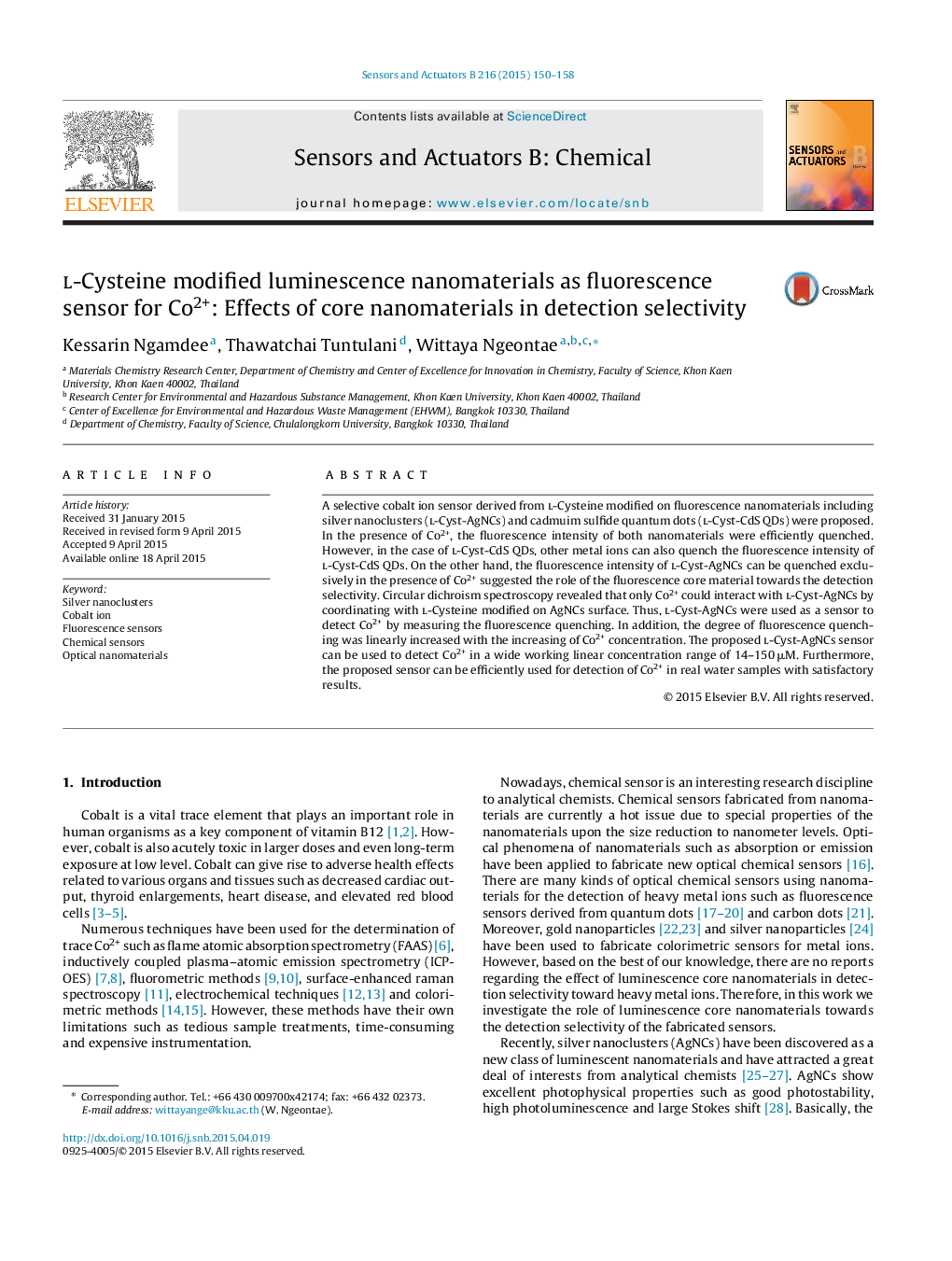| Article ID | Journal | Published Year | Pages | File Type |
|---|---|---|---|---|
| 750573 | Sensors and Actuators B: Chemical | 2015 | 9 Pages |
•Effect of core luminescence nanomaterials in detection selectivity of Co2+ is elucidated.•The proposed sensor showed excellence selectivity towards Co2+.•Wide working linear concentration range and low detection limit can be obtained.•This sensor can be applied to use in real water sample with excellence accuracy and precision.
A selective cobalt ion sensor derived from l-Cysteine modified on fluorescence nanomaterials including silver nanoclusters (l-Cyst-AgNCs) and cadmuim sulfide quantum dots (l-Cyst-CdS QDs) were proposed. In the presence of Co2+, the fluorescence intensity of both nanomaterials were efficiently quenched. However, in the case of l-Cyst-CdS QDs, other metal ions can also quench the fluorescence intensity of l-Cyst-CdS QDs. On the other hand, the fluorescence intensity of l-Cyst-AgNCs can be quenched exclusively in the presence of Co2+ suggested the role of the fluorescence core material towards the detection selectivity. Circular dichroism spectroscopy revealed that only Co2+ could interact with l-Cyst-AgNCs by coordinating with l-Cysteine modified on AgNCs surface. Thus, l-Cyst-AgNCs were used as a sensor to detect Co2+ by measuring the fluorescence quenching. In addition, the degree of fluorescence quenching was linearly increased with the increasing of Co2+ concentration. The proposed l-Cyst-AgNCs sensor can be used to detect Co2+ in a wide working linear concentration range of 14–150 μM. Furthermore, the proposed sensor can be efficiently used for detection of Co2+ in real water samples with satisfactory results.
Graphical abstractFigure optionsDownload full-size imageDownload as PowerPoint slide
